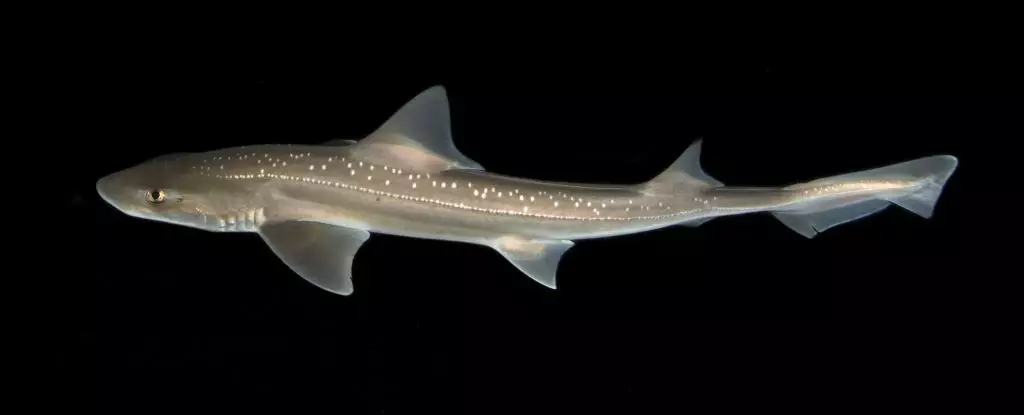Sharks, the iconic predators of the ocean, have been subject to myth and misconception for centuries. Commonly depicted as fearsome yet eerily silent creatures lurking beneath the waves, they symbolize nature’s raw power and uncontrollable danger. Yet, this long-held silence may not be as absolute as we’ve been led to believe. Recent research has unveiled an unexpected dimension of shark behavior: they can make noise. This pivotal discovery challenges the very narrative that surrounds them. While the fear of sharks is rooted in their predatory prowess, the notion that they are voiceless enhances their enigmatic allure. Knowing they have a form of communication begs the question—what else don’t we understand about these complex creatures?
Voices from the Depths
For the first time, scientists observed the rig shark (Mustelus lenticulatus) producing deliberate clicking sounds. Such auditory signals were previously unknown among sharks, reinforcing the stereotype that these fish are merely silent hunters. Carolin Nieder from the Woods Hole Oceanographic Institution expressed her astonishment at this revelation, highlighting how it sheds light on a potential form of shark communication that was, until now, overlooked. Sound waves travel effectively underwater, and this discovery compels us to reconsider how sharks might engage with their environment and each other.
Curiously, such sounds aren’t unique to rigs; recent studies have documented several species of elasmobranchs, which include sharks and their relatives, producing a variety of auditory signals. The diversity of these sounds opens a door to a realm previously unexplored, leading to questions about whether other elusive species might also be sending out messages masked in the ocean’s depths.
The Rig Study: An Eye-Opening Methodology
The inquiry into rig communication began with a very methodical approach. Researchers opted for something manageable: juvenile rigs, small enough to be easily studied. In their experiments between May 2021 and April 2022, they meticulously documented the sound production of 10 juvenile rigs capturing their movements and reactions under controlled conditions. During their trials, handlers noted the sharks produced sharp, high-frequency clicks upon being handled—sounds loud enough to rival everyday noise such as a gunshot or fireworks.
Interestingly, the frequency of clicks diminished as the sharks became acclimatized to being handled, hinting at a stress-linked response. This poses a vital question: Are these clicks merely a product of alarm or distress, or could they signify a complex response system, perhaps even communication with one another?
The Mechanics Behind the Noise
The mechanics of how rigs produce these sounds remain an intriguing puzzle. Researchers postulate that the sharks snap their jaws quickly to create clicking noises. The nature of these sounds—short and broadband in frequency—strongly suggests that teeth may play an essential role in this process. However, uncertainty persists about the purpose of these clicks. Much depends on whether the sharks can hear the sounds they create. If they do, it could indicate a profound method of interspecies communication; if not, we might just be observing a byproduct of their instinctual responses.
What stands out about this research is not merely the discovery of sound-making but the larger implications it holds. Imagine a world where the ocean’s silent, feared creatures convey messages, express distress, or perhaps communicate aggression through clicks and clacks. Such sounds could redefine shark hierarchies and social interactions, propelling their understanding from rudimentary predator-prey dynamics to a more nuanced behavioral spectrum.
Exploring New Horizons in Marine Communication
As the study of shark communication continues to unfold, the implications stretch far beyond these specific species. The ocean is teeming with life, and myriad other creatures may possess unheard forms of communication waiting to be discovered. This research urges us to dive deeper into marine biology disciplines as we rethink our understanding of social structures within aquatic ecosystems.
Furthermore, beyond the scientific exploration, these findings can shape conservation efforts. By recognizing the complexity of shark behavior that includes sonic communication, a case can be made for enhancing their habitats and reducing human-induced noise pollution that may hinder their ability to thrive in the wild.
Sharks, once regarded solely as ruthless hunters, now hold the potential for layered narratives of interaction and survival, raising our curiosity and responsibility toward understanding oceanic ecosystems more holistically. Society must embrace this new knowledge—not just to shift our perceptions of sharks but to foster a deeper awareness of the creatures that share our planet. Through research and conversation, we can destigmatize sharks, allowing them a voice in a world that often labels them as mere monsters beneath the waves.


Leave a Reply